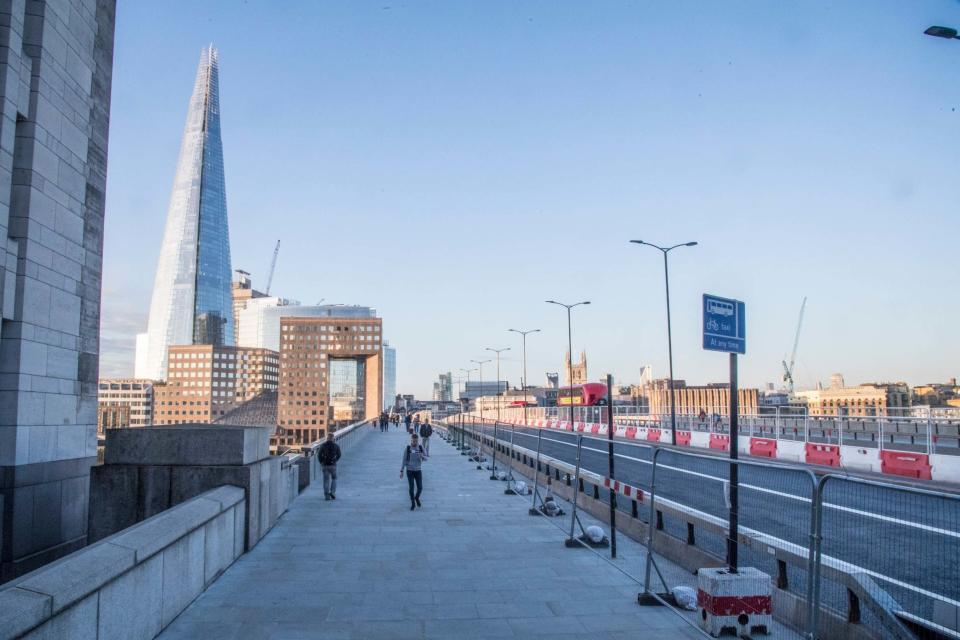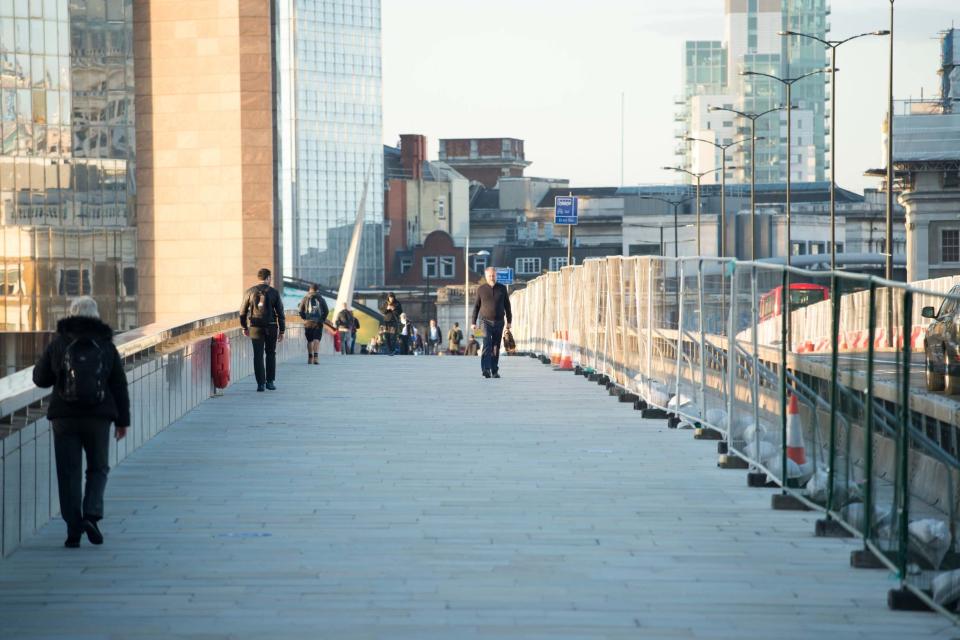London Bridge reopens after six months of repairs... but cars still banned from daytime crossings

London Bridge was today reopening after six months of repairs – but cars, minicabs, vans and lorries are banned from crossing it during the day.
Only buses, black taxis, motorbikes and cyclists will be able to cross the bridge between 7am and 7pm, Monday to Friday – with motorists who break the rules being fined £130.
There are no restrictions from 7pm to 7am and throughout the weekend. Pedestrians will continue to be able to cross the bridge at all times.
The radical change – the first daytime restriction on “general traffic” crossing a Thames bridge – comes as it was announced that work to install segregated cycle lanes along Kensington High Street would begin at the end of the month.
Both projects are being done under a fast-track process that avoids the need for lengthy consultation. They are part of Transport for London’s efforts to prevent a “car-led” recovery from Covid and to encourage walking and cycling.

The changes to London Bridge, after a £5m repair programme by the City of London Corporation that is ending about a month earlier than expected, include the introduction of a 2m-wide segregated cycle lane in each direction.
The road will also be changed from two lanes to one for general traffic in both directions. The bus lanes will be widened, these having been narrowed when protective barriers were installed on many Thames bridges in the wake of the Westminster Bridge terror attack in 2017. The barriers will be retained.
During the repair programme, only cyclists, buses, taxis and motorbikes were allowed to cross the bridge.
Effectively retaining this restriction as the bridge reopens may reduce the potential for confusion and limit the number of motorists who get caught by a camera or are forced into an unexpected diversion.
The changes link in with similar restrictions on the north side of the bridge at Bank junction that came into force last year, and changes introduced a fortnight ago on Bishopsgate, with only buses and cyclists allowed between 7am-7pm on weekdays at both locations.
TfL says this creates a weekday “walking and cycling corridor” stretching between London Bridge station and Shoreditch.
Sam Monck, TfL's head of healthy streets investment delivery planning, said: “Enabling more people to walk and cycle is absolutely vital to London’s recovery from coronavirus, which is why we are extending some of the existing restrictions to London Bridge access as part of our Streetspace programme.”
TfL admits there will be traffic queues on Tower Bridge and Blackfriars bridge as a result, and advises drivers to consider Southwark bridge, Westminster bridge and Lambeth bridge.
Further west, Vauxhall bridge is closed to general traffic until November for repairs, while the long-term closure of Hammersmith bridge has increased pressure on Putney bridge and Chiswick bridge.
In Kensington and Chelsea, the Tory council has reversed years of opposition to work with TfL to create “pop up” cycle lanes, using plastic “wands”, along the length of Kensington High Street.
These will link with the cycleway under construction between Brentford and Hammersmith, and the existing CS3 cycle superhighway that runs from Hyde Park to Tower Hill, and then on to Barking.
The wands will be installed from September 28. This will be followed by changes to road junctions this winter.
Cllr Johnny Thalassites, the council’s lead member for transport, said: “More people are choosing active travel to get around after the coronavirus pandemic and this experimental route will give residents, commuters and visitors another option for travelling safely through Kensington and Chelsea.”

 Yahoo News
Yahoo News 